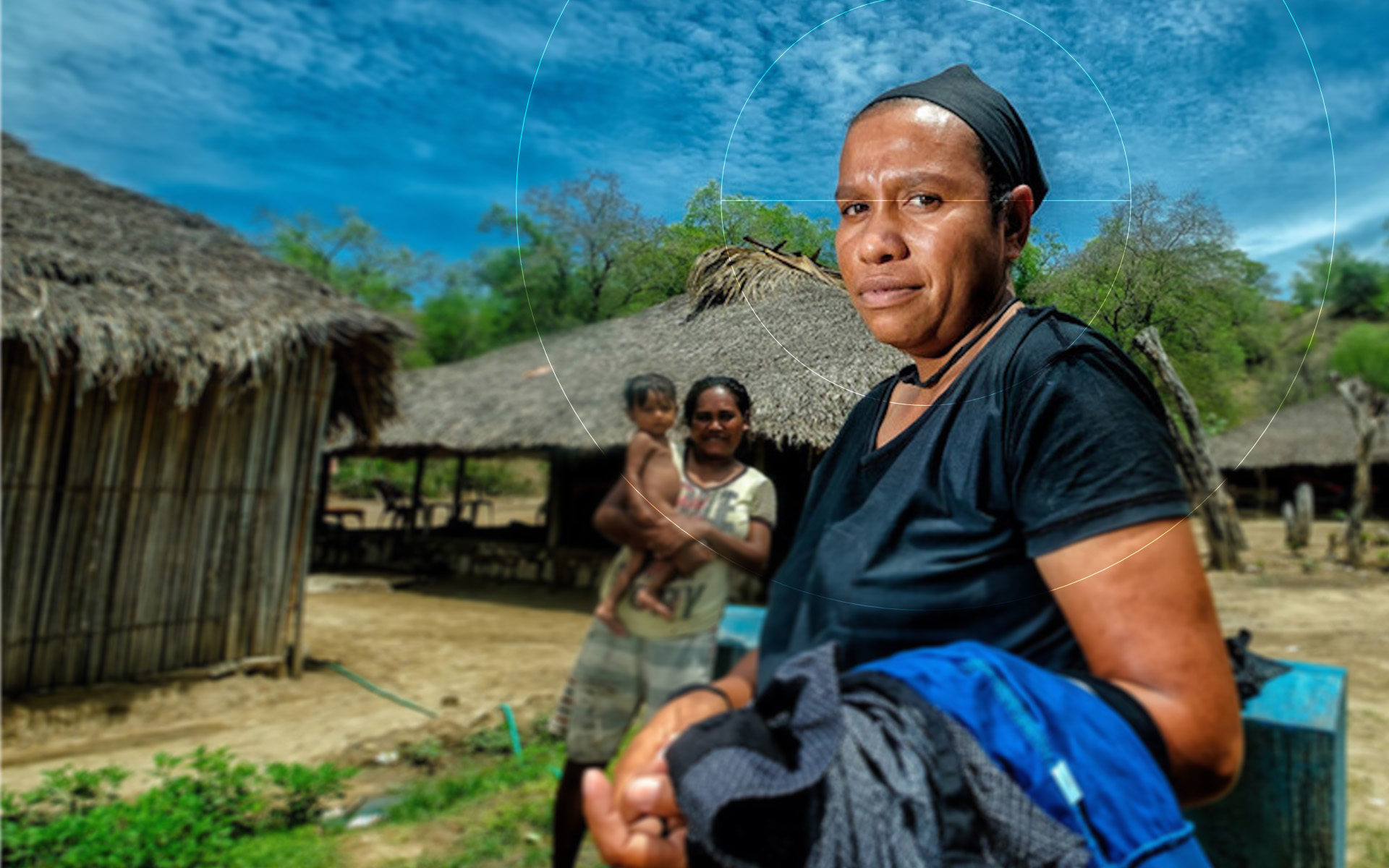ADB and its partners are leading the collective action against climate change in Asia and the Pacific through projects that lead to a low-carbon, resilient, and sustainable future. They are making sure that people and communities are not left behind in the transition toward a low-carbon and green future.
Operational Priority Thrusts
ADB’s Strategy 2030 will
- increase climate change mitigation
- ensure a comprehensive approach to building climate and disaster resilience
- ensure environmental sustainability
- increase focus on the water–food–energy security nexus
Climate change is felt everywhere. The earth is heating up at an unprecedented pace, and its resources are being consumed at an unsustainable rate. People are depleting and destroying the earth’s resources faster than they can be replenished. The world must hurry to not only mitigate the effects of climate change but also to build resilience to all its impacts, including the increasing frequency and intensity of disasters triggered by natural hazards.
The Asia and Pacific region contributes much to the earth’s deterioration. The region is responsible for over 50% of the global greenhouse gas (GHG) emissions. Half of the top 10 countries causing the most plastic pollution in the world are in Southeast Asia. If climate change and environmental sustainability are not addressed, the use of global resources will double to 190 billion tons from 92 billion tons by 2060, and GHG emissions will increase by 43%.
ADB is Asia and the Pacific’s climate bank. Its ambition is to provide $100 billion in cumulative climate financing from 2019 to 2030. It increased its pipeline of projects addressing climate change and disasters and worked with various partners to scale up its delivery of climate financing to developing member countries. This shift is necessary. Warren Evans, ADB special senior advisor on climate change, said, “We cannot achieve sustainable development without changing the way we do business in sectors to increase the resilience to climate impacts of both what we are financing, such as infrastructure, and of the communities that are served by that infrastructure.”
In 2022, about $335 million was mobilized from partners, prioritizing climate mitigation actions and climate and disaster resilience interventions and infrastructure, improving access to credit and insurance, and helping countries transition to renewable and clean energy sources. Of the 124 sovereign projects cofinanced by partners in 2022, 86 or roughly 70% contained climate change and nature-positive design elements.
Asia and the Pacific contributes much to the earth’s deterioration. The region is responsible for over 50% of the global greenhouse emissions and half of the top 10 countries causing the most plastic pollution are in Southeast Asia.
The Flood and Riverbank Erosion Risk Management Investment Program reduces the risk of erosion and floods using adaptive and innovative measures that protect the lives and livelihood of thousands of people in Bangladesh.
Learn moreA Low-Carbon Future
Fighting climate change and its consequences are among ADB’s priorities. It is helping countries across Asia and the Pacific pursue policies and practices that reduce greenhouse gas (GHG) emissions. Together with its partners, ADB is working toward a low-carbon and resilient future for Asia and the Pacific.
Globally, a third of GHG emissions come from the energy sector. Transitioning to clean energy such as solar, hydropower, and wind power is the only way to achieve net zero in Asia and the Pacific. To help meet this urgent need, ADB and its partners introduced the regional initiatives Energy Transition Mechanism (ETM) and the Just Transition Support Platform.
The ETM is a scalable, collaborative initiative developed in partnership with developing member countries that will leverage a market-based approach to accelerate the transition from fossil fuels to clean energy. The ETM will use concessional and market-based funds from governments, multilateral banks, private sector investors, philanthropies, and long-term investors to retire or repurpose existing coal power plants and replace them with clean power. Launched at the COP26 in 2021, the ETM achieved its first significant milestone in November 2022 when, during the G20 Leaders Summit held in Bali, Indonesia, ADB and Indonesian partners signed a landmark memorandum of understanding for the first early retirement of a coal-fired power plant under the mechanism. ADB is also helping mobilize $500 million in financing for coal-power retirement in Indonesia via the Climate Investment Fund’s Accelerated Coal Transition program.
In the same year, ADB also sought to expand both the geographic remit and financial resources of the ETM. Expanding the mechanism’s geographic coverage, ADB continued ETM’s efforts in the Philippines and Viet Nam, and commenced pre-feasibility studies in Kazakhstan and Pakistan. ADB also established the Energy Transition Mechanism Partnership Trust Fund as the funding vehicle for the mechanism, attracting a €30 million contribution from Germany to complement Japan’s initial contribution of $25 million. One of the initiatives it supports is the Just Transition Support Platform, which contributes to ensuring no individual, community, country, nor region is left behind in the push toward a low-carbon future. Launched at the COP27 in 2022, the platform is being operationalized through an ADB technical assistance that is helping developing member countries build their capacities in implementing practical approaches to strategically plan, implement, and finance just transition.
Transitioning to clean energy sources such as solar, hydropower, and wind power is the only way to achieve net zero in Asia and the Pacific.
The Alternative Renewable Energy Pilot Project harnesses solar power to provide reliable and sustainable electricity while improving livelihoods in Bhutan's remote rural areas.
Learn moreNature Positive
Nature is the foundation of the region’s economy. About 30% of Asia and the Pacific’s national wealth comes from nature. Qingfeng Zhang, chief of ADB’s rural development and food security (agriculture) thematic group and officer in charge of the environment thematic group, emphasized that “investing in nature and environmental sustainability is key in achieving economic growth and reducing poverty in Asia and the Pacific.” However, biodiversity loss in the region threatens up to 63% or $19 trillion of the region’s gross domestic product.
ADB has committed to accelerating nature-positive investments across the region in line with the 2030 Global Biodiversity Framework to halt and reverse biodiversity loss by the end of the decade. Together with other multilateral banks such as the African Development Bank, Asian Infrastructure Investment Bank, Caribbean Development Bank, European Bank for Reconstruction and Development, European Investment Bank, Inter-American Development Bank, IDB Invest, Islamic Development Bank, and the World Bank Group, ADB committed at the COP26 to mainstream environmental considerations into all its operations and policies and to support nature-positive investments. They agreed to collaborate to support projects that proactively protect, restore, and sustainably use nature and its services.
Some initiatives reflecting this commitment include the Asia and the Pacific Water Resilience Initiative, which promotes resilient water management and is cofinanced by the governments of Australia, Austria, Japan, the Republic of Korea, and Spain, as well as the Bill and Melinda Gates Foundation. The Blue Pacific Finance Hub is another, which aims to restore ocean health, build coastal resilience, and develop sustainable blue economies. It is supported by the Global Environment Facility (GEF) and the Nordic Development Fund. In relation to clean air, ADB is supporting five developing member countries to develop policies and technical solutions to air pollution through the Strengthening Knowledge and Actions for Air Quality Improvement project in partnership with Clean Air Asia. Supported by three trust funds—the Japan Fund for the Joint Crediting Mechanism, the People’s Republic of China Poverty Reduction and Regional Cooperation Fund, and the Urban Climate Change Resilience Trust Fund under the Urban Financing Partnership Facility—this technical assistance is enabling cities across the region to assess air quality and develop clean air action plans and technology options to address pollution.
The failure to recognize the value of the environment in economic development is undermining socioeconomic achievements. Through the Natural Capital Lab, ADB is collaborating with partners, including Stanford University Natural Capital Project, to develop systems and tools that can measure natural capital and its benefits. Wildlife trade is a major biodiversity issue that threatens natural capital and people’s health. ADB, supported by the Climate Change Fund, GEF, and the Republic of Korea e-Asia and Knowledge Partnership Fund, has addressed this through the Protecting and Investing in Natural Capital in Asia and the Pacific project, which helps fight the illegal wildlife trade in 11 countries in the region.
ADB partnerships also sought to minimize waste and pollution and ensure environmental sustainability through projects that foster green business development and the circular economy. Through projects like Strengthening the Bio-Circular-Green Economy and the Hubei Huanggang Dabie Mountain Ecosystem Protection and Carbon-Neutral Green Development Project, ADB and its partners can provide people with livelihoods while protecting the natural ecosystems that underpin their businesses.
Transformative investments in natural capital require innovative and multisectoral solutions across all areas of economic activity.
The Blue Pacific Finance Hub promotes investments in ocean health and blue economies to strengthen resilience, protect the culture, and spur economic activities in the Pacific.
Learn moreShift and Accelerate
Two keywords define the trajectory of ADB’s fight against climate change and environmental deterioration: shift and accelerate. It is no longer enough to just do no harm to the environment and to weather the effects of climate change. We need to shift to more unified and collective action to make the world resilient and sustainable, and we need to do this fast. The world is heating up faster than expected and it is deteriorating at an accelerated rate.
The fight against climate change must cover not just adaptation and resilience but energy transformation and restoration of nature as well. The shift from fossils to clean energy is imperative as this is the only way to preserve life. The road to net zero reduces the emissions that choke our earth while stimulating green growth and nature-positive investments that ensure sustainable life. It is a bumpy and long road, but it preserves and protects our earth, our source of life and livelihood.


